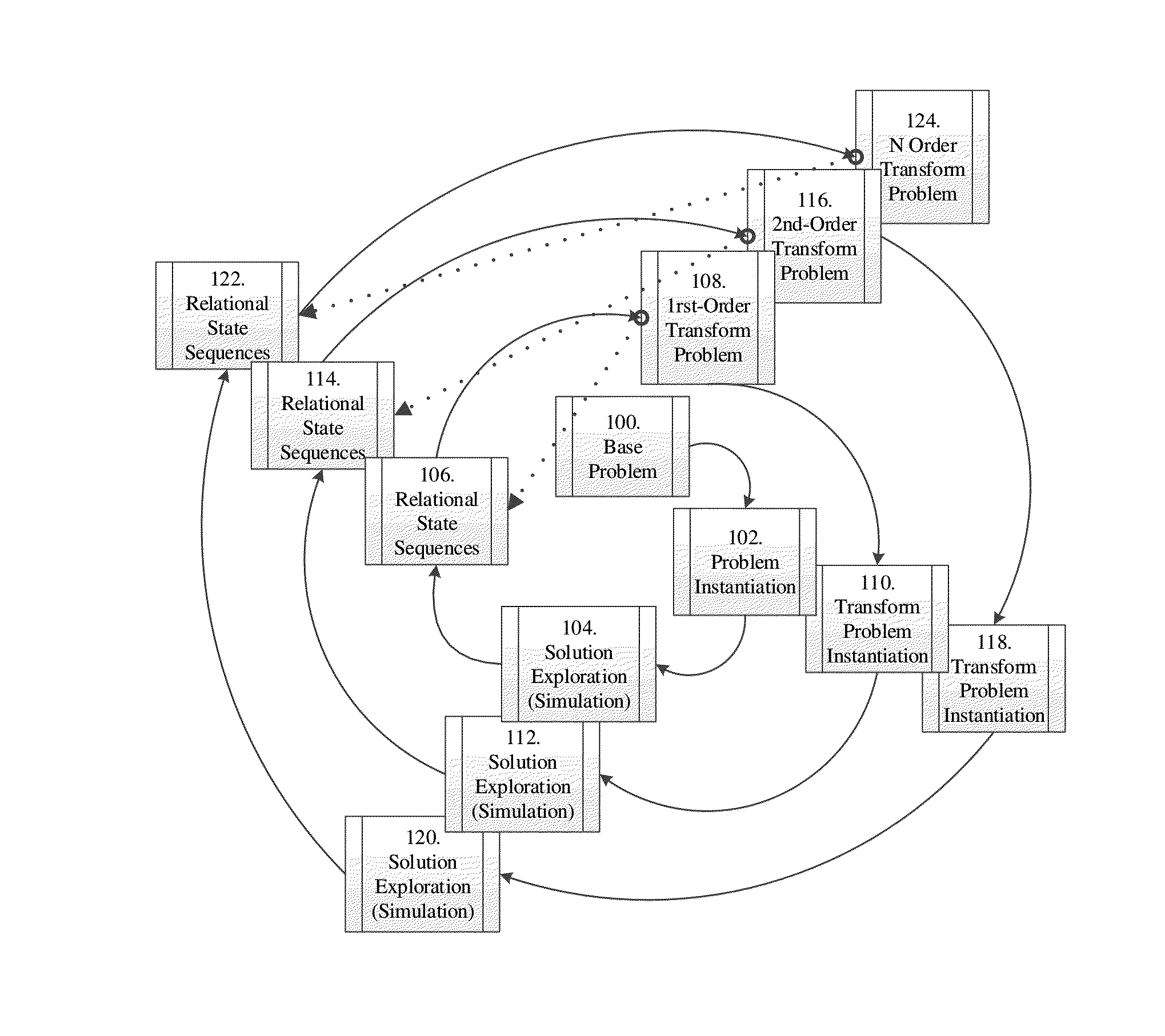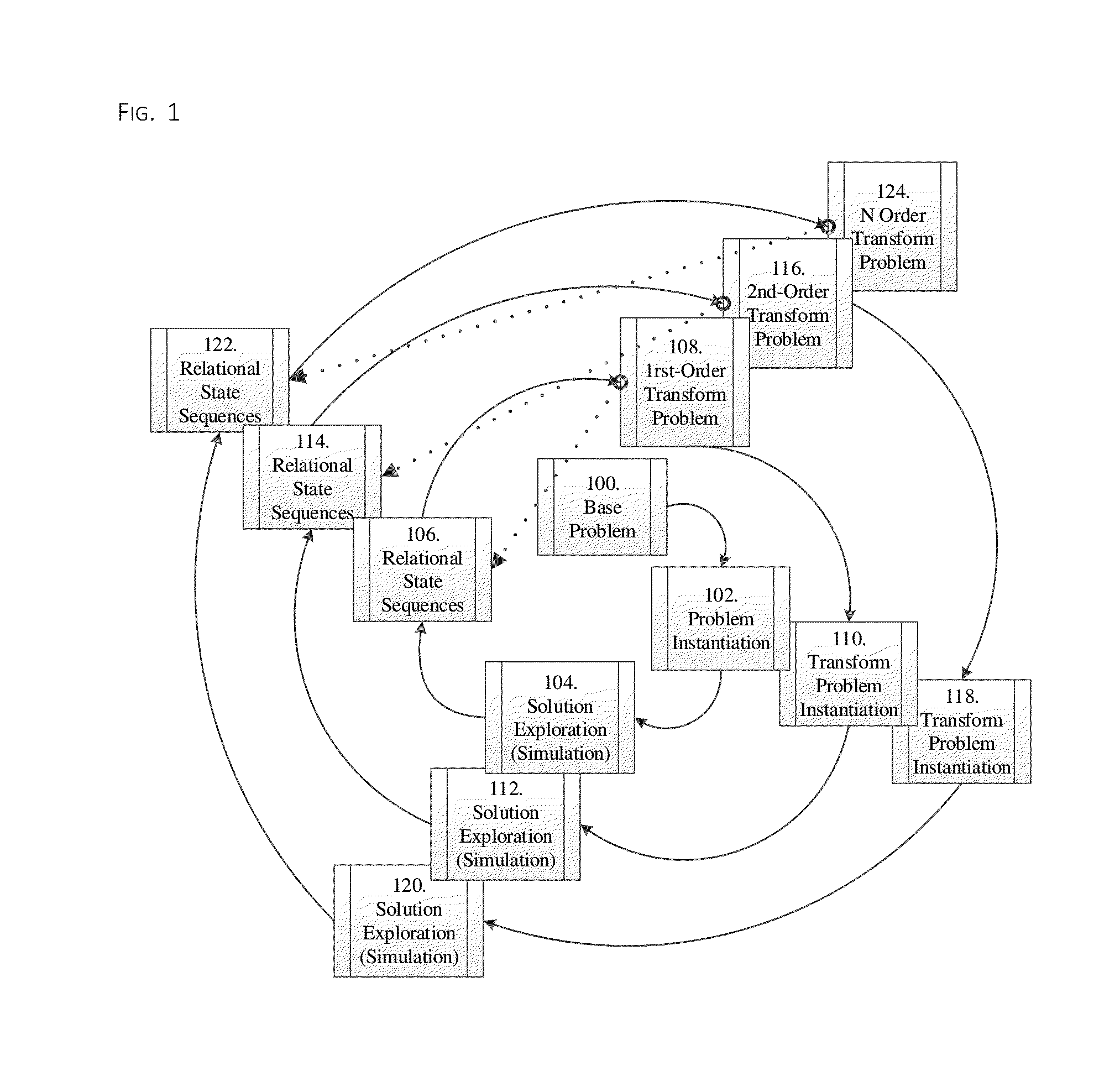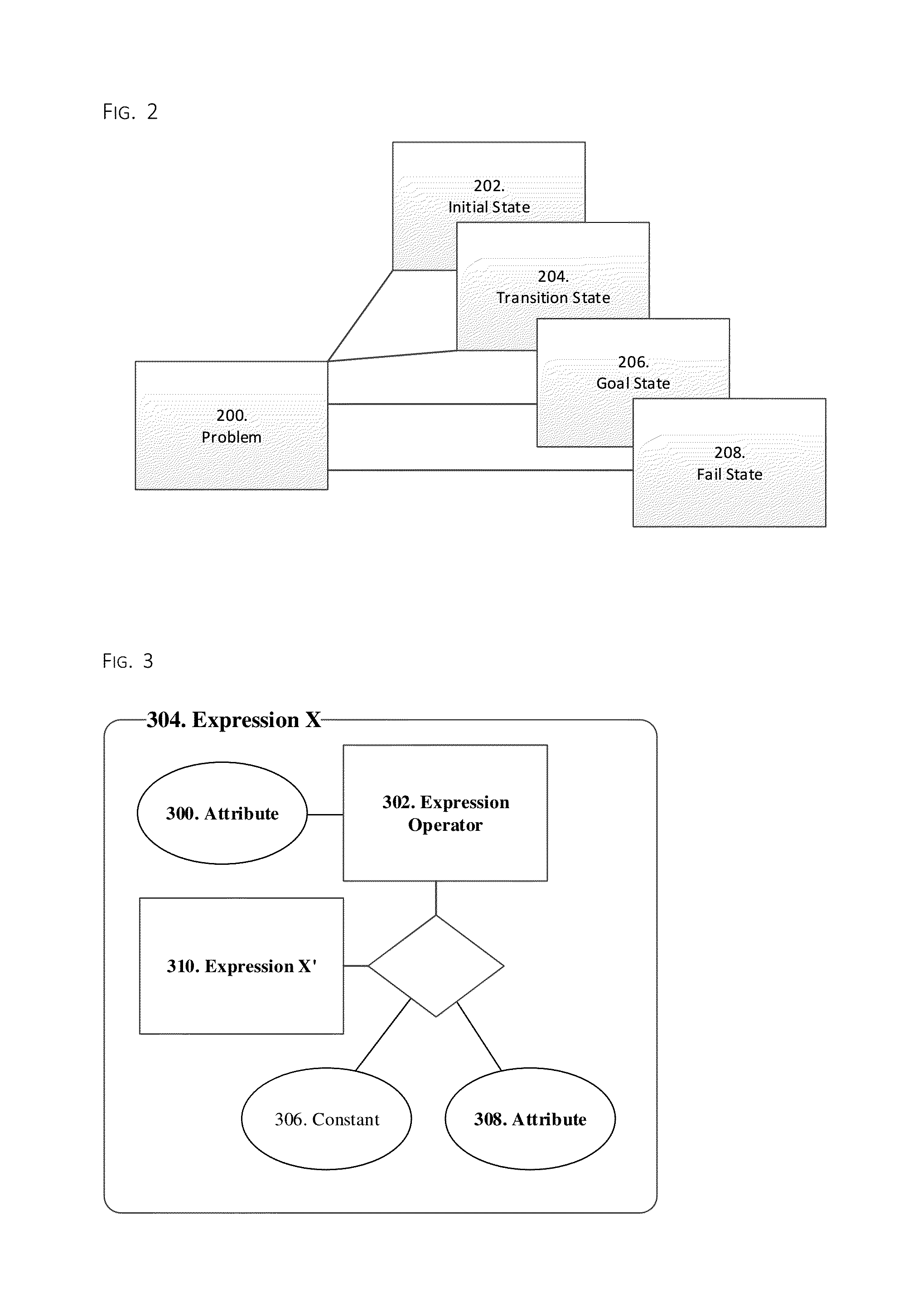Method and System for Universal Problem Resolution with Continuous Improvement
- Summary
- Abstract
- Description
- Claims
- Application Information
AI Technical Summary
Benefits of technology
Problems solved by technology
Method used
Image
Examples
Embodiment Construction
Overview of the Simulation Process and Continuous Improvement Cycle
[0185]The Universal Problem Resolution Framework (UPRF) of the present invention provides a transformation paradigm in which the state sequence associated with each distinct value from problem instances solved using simulation become sources and targets for a higher order transformation problem that records operation sequences that correctly predict target sequences for the lower level problem from other sequences without the need for re-simulation. The solution exploration is based on simulation whereby UPRF searches for solutions utilizing the transition queries until a goal state or failure state is reached or until a generalization from a higher order transform is realized that successfully calculates the relational state sequences associated with an unsolved instance. When a generalization is realized, it is applied back to the original problem for instances that are targeted for solution by prediction rather th...
PUM
 Login to View More
Login to View More Abstract
Description
Claims
Application Information
 Login to View More
Login to View More - R&D
- Intellectual Property
- Life Sciences
- Materials
- Tech Scout
- Unparalleled Data Quality
- Higher Quality Content
- 60% Fewer Hallucinations
Browse by: Latest US Patents, China's latest patents, Technical Efficacy Thesaurus, Application Domain, Technology Topic, Popular Technical Reports.
© 2025 PatSnap. All rights reserved.Legal|Privacy policy|Modern Slavery Act Transparency Statement|Sitemap|About US| Contact US: help@patsnap.com



